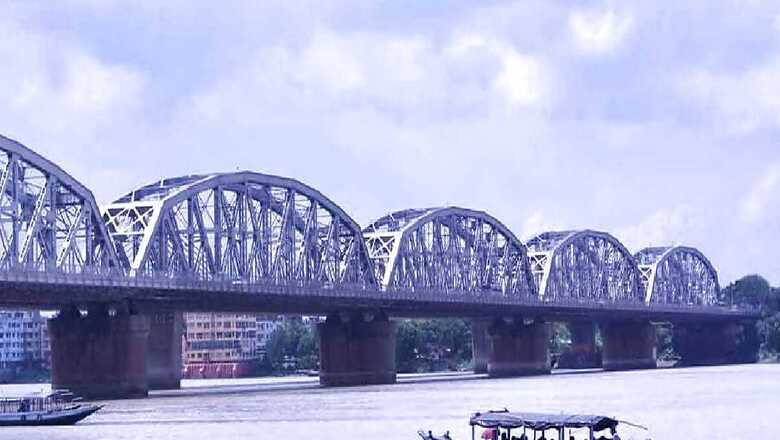
views
Imagine standing on the banks of the Ganges at the renowned Dakshineswar temple near Kolkata and suddenly witnessing a plane descending over the Bally Bridge. Then it lands on the river, right in front of the Dakshineswar Temple. Such a scene would certainly astonish you, and rightly so. This sight was apparently quite common about seventy years ago. Although it may sound surprising, there was indeed an international air service operating on the Ganges. Bally and Dakshineswar were witnesses to this remarkable history. An independent researcher’s efforts have brought this historical memory back to light. The researcher has also gathered various authentic documents from that time period. It has been discovered that no trace of this history remains today.
Many planes used to land on this section of the Ganges daily and would then fly to various destinations, both within India and abroad. These planes were not the typical land planes, but were instead more like seaplanes or flying boats. As such, they landed on water, rather than on land. No runway was needed; the area where they landed on a river or lake was known as a seaplane base.
Recently, writer and independent researcher Tanmoy Bhattacharjee from Kolkata has discovered this forgotten history. While researching for his book ‘Ganga-Tirabarti Janapad’, Tanmoy came to know the fact of the ‘Seaplane Base’. It revealed that in the first half of the 20th century, a seaplane base was established near Kolkata. Land planes landed at the Dum Dum Aerodrome, while seaplanes touched down on the Hooghly River near Willingdon Bridge (now known as Bally Bridge). Tanmoy says, this was the only international seaplane base in the city of Kolkata and the state, operating from 1938 to 1949, according to various British-era records.
It is known that the area near Willingdon Bridge, in Bally, the northernmost settlement on the banks of the Hooghly in Howrah district, was chosen as the seaplane base. Imperial Airways began an airmail service from Kolkata to Australia via Singapore, and the flying boat ‘Cooee’ landed at this seaplane base. The flying boats would arrive from Kolkata, cross Willingdon Bridge, and land on the Ganges between Dakshineswar and Uttarpara, where they would float for extended periods.
The base wasn’t just about air service; a few air accidents also took place there. With the outbreak of World War II in 1939, there were changes in the air services. Yet, the base played a crucial role during the war. According to Tanmoy, the Bally seaplane base also witnessed a historic journey. Netaji’s elder brother, Sarat Chandra Bose, was requested to defend INA soldiers of Rangoon. In mid-July 1946, Sarat Chandra Bose, his son Sisir Kumar Bose, and family friend Manubhai Bhimani boarded a flying boat from the Bally seaplane base and set off for Rangoon. Gradually, the base’s activity began to decline. The popularity of seaplanes quickly diminished, leading to a decisive move in 1949.
On August 1949, 11 years after its inauguration, the Bali seaplane base was officially closed. The site of the historic seaplane base is now located next to the modern Nivedita Bridge. The area surrounding the former seaplane base has now become a sort of wasteland, losing the pride of its once-glorious history.

















Comments
0 comment